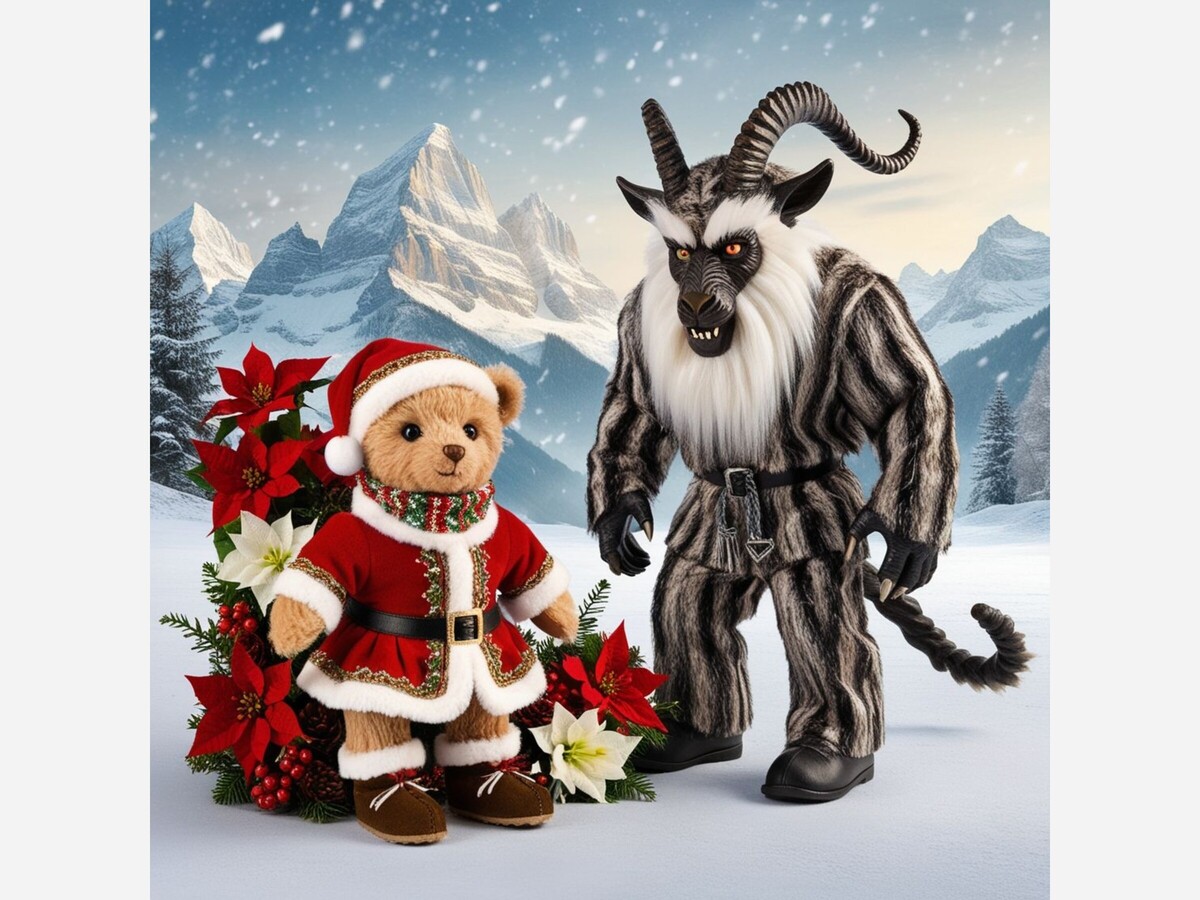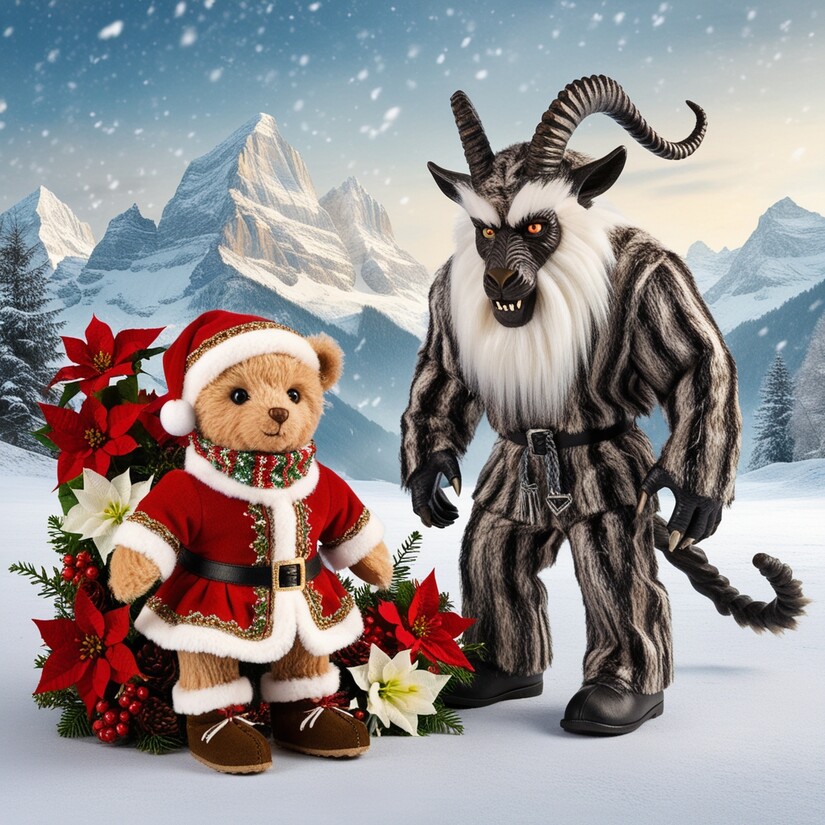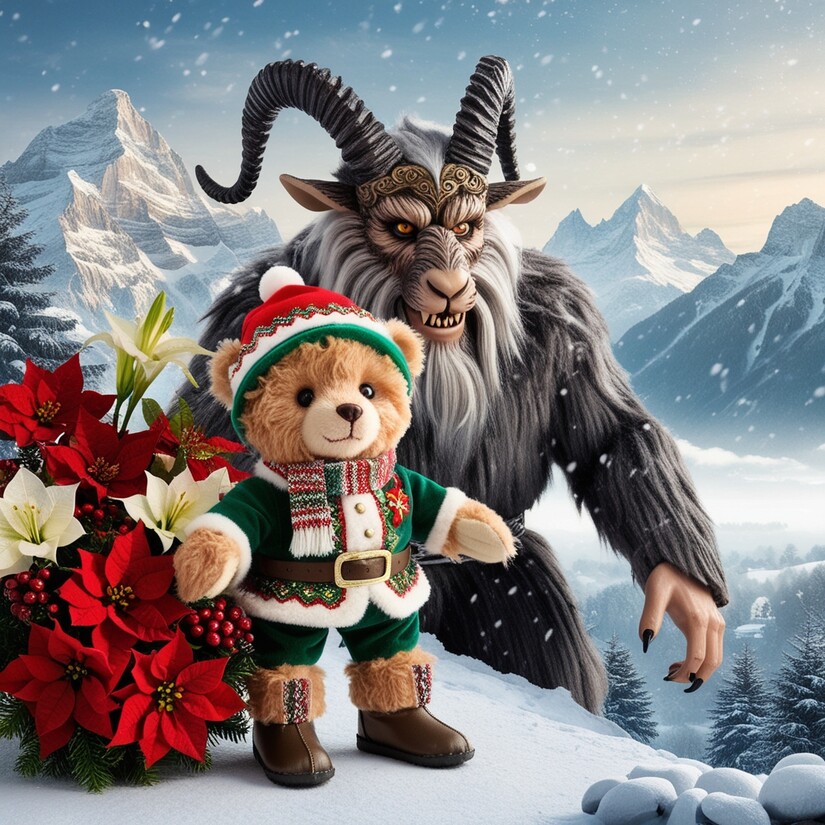Image

Krampus, a horned and fearsome figure from Central European folklore, embodies the darker side of holiday traditions. Emerging predominantly from the Alpine regions, including Austria, southern Germany, and Italy, Krampus acts as Saint Nicholas’s counterpart, punishing naughty children while the saint rewards the good (Hutton 89). This character is celebrated annually on December 5th, Krampusnacht (Krampus Night), with revelers donning grotesque costumes to reenact the mythical story.
Krampus’s origins are deeply rooted in pre-Christian pagan traditions. The figure’s goat-like features, including horns, cloven hooves, and a menacing visage, echo the imagery of Pan, the Greek god of the wild and shepherds, who was revered for his association with fertility and nature. Early Christian authorities demonized Pan and similar pagan deities, linking them to Satan and marking a cultural shift where Krampus transformed into a symbol of fear and punishment during the Christmas season (Leeming 42).
In pagan Alpine traditions, horned figures often played roles in winter solstice rituals, symbolizing the death and rebirth cycle of nature. As Christianity spread, these rituals were absorbed and redefined to align with the new religious framework. Krampus evolved into a cautionary figure, reinforcing morality during a time of celebration (Green 67). His association with Saint Nicholas illustrates this cultural syncretism, combining elements of pagan folklore with Christian narratives.
Krampus remains most popular in Alpine regions, where Krampusnacht features parades, dramatic performances, and costumed revelry. This tradition has recently gained international interest, particularly in North America, as a quirky and macabre alternative to mainstream Christmas customs (Hutton 91). The enduring appeal of Krampus lies in its fusion of ancient folklore and modern fascination with the mystical and grotesque.
Krampus’s role as a punisher of naughty children is central to his legend. While Saint Nicholas rewards well-behaved children with gifts, Krampus is said to carry a bundle of birch branches to whip the misbehaved or even haul them away in a sack (Green 68). This duality between reward and punishment highlights the moral lessons embedded in these winter traditions, ensuring compliance with societal norms.

